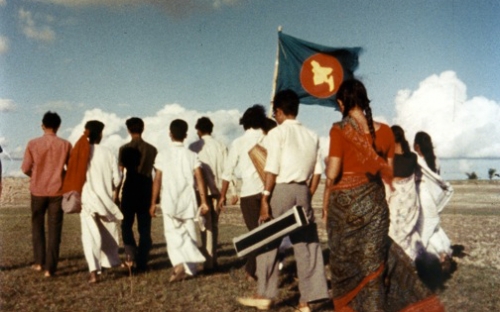Terra Incognita: Bangladesh
|
Discover the images of the Secretary General of United Nations, Mr Ban Ki-Moon, visiting the festival |
|
How to live with the burden of having a terrorist as a father? Tonight at 8pm at CIVA |
|
Discover the secrets behind the lauch of war in Irak! Tonight at 7pm at Espace Senghor. |
|
Cordoba, Northern Colombia: a joyful land. Some even call it Paradise. Tonight at 8.14pm at Espace Senghor |
Bangladesh? The name evokes catastrophes and a turbulent history more than cinematography. Hardly known outside its borders, Bangladeshi film reveals a surprisingly rich culture that deserves our interest and attention.
Points of reference:
Everything conspires to make this desperately poor, flat country in the delta of the Ganges extremely vulnerable. With 10% of its land below sea level, regularly hit by floods, cyclones and tidal waves that kill hundreds of thousands of people, it could even be half swallowed up by the sea some day. Twice born in a bloody struggle, this eastern part of the former Bengal was chopped in half during the partition of India in 1947, to become an independent state in 1972 after the exceptionally murderous and brutal war perpetrated by the Pakistani army against the Bangladeshi freedom fighters and the population. The toll of the war, with three million dead, remains forever engraved in the collective memory of the people of Bangladesh.
From 1976, the film industry experienced a spectacular increase in the number of productions each year, from 42 to 80 in 2003. The 1980s saw the emergence of new talents, celebrated by critics and audiences alike – Morshedul Islam, Tanvir Mokammel, Humayun Ahmed, Abu Sayeed, Alamgir Kabir, Amjad Hussain, Masihuddin Shaker, Sheikh Niyamat Ali, Humayun Ahmed – some of whom entered the international festival circuit and are known abroad, such as Tareque Masud, at the forefront of this generation of filmmakers with The Clay Bird (2002).






